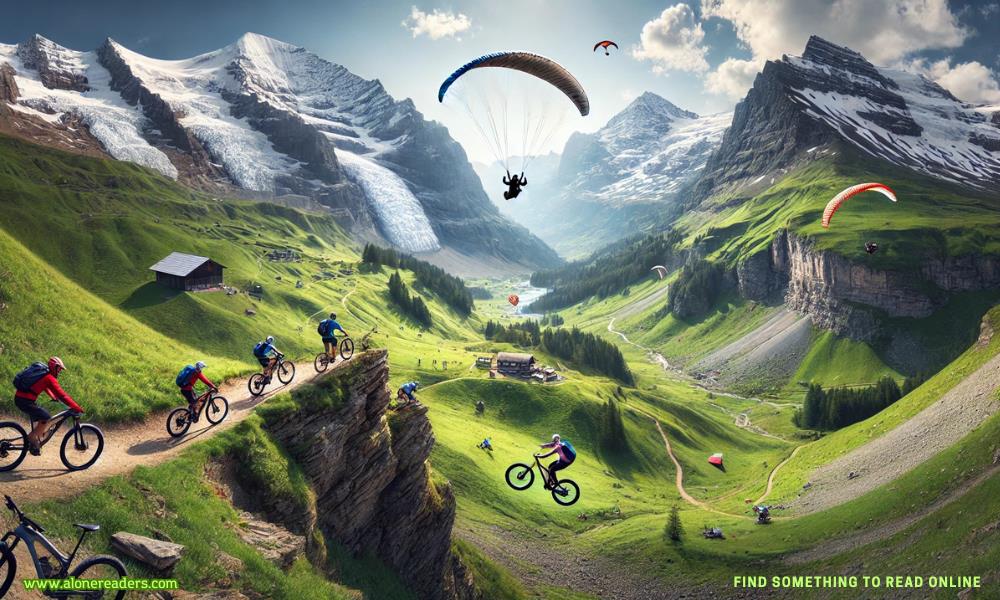
The Swiss Alps are nature’s playground for thrill-seekers and outdoor lovers. With dramatic peaks, shimmering glaciers, emerald valleys, and picturesque alpine towns, this region of Switzerland blends adrenaline-pumping sports with jaw-dropping beauty. From snowboarding down pristine slopes to paragliding over snowy ridges, the Swiss Alps offer unforgettable adventures in all seasons. This blog post explores the top adventure sports, travel essentials, local cuisine, accommodations, and safety tips for travelers looking to explore this alpine wonderland.
A landscape made for thrill
The Swiss Alps stretch across the southern portion of Switzerland, forming one of the most beautiful mountain ranges in the world. Snow-covered peaks, deep valleys, and glacial lakes make this region perfect for a wide variety of outdoor sports, both in summer and winter.
Four-season adventure
Unlike other destinations that peak in just one season, the Alps thrive year-round. Winter brings world-class skiing, snowboarding, ice climbing, and snowshoeing. Come summer, the snow melts into rivers and hiking trails, opening opportunities for canyoning, mountain biking, paragliding, and bungee jumping.
A safe, well-developed infrastructure
Switzerland's efficient transport system, clean facilities, and safety-first approach make it one of the most reliable adventure destinations on the planet.
By Air
The nearest international airports are:
From the airport, trains and buses connect you to major resort towns like Interlaken, Zermatt, St. Moritz, and Grindelwald.
By Train
Switzerland's SBB rail system is fast, scenic, and easy to use. Glacier Express and Bernina Express routes are scenic adventures on their own.
Estimated Cost
1. Skiing and Snowboarding (Winter)
The Swiss Alps are home to some of the best ski resorts in the world, like Zermatt, Verbier, St. Moritz, and Davos. With miles of pistes, powder snow, and expert-level slopes, winter sports are at their peak here.
Cost:
2. Paragliding (Year-Round, Best in Summer)
Popular launch points include Interlaken, Lauterbrunnen, and Grindelwald. Soar over lakes and peaks with licensed instructors.
Cost:
3. Canyoning
In areas like Interlaken and Ticino, adventurers descend rocky gorges through rappelling, sliding, and jumping into pools.
Cost:
4. Glacier Hiking and Ice Climbing
Try glacier treks near Saas Fee or Aletsch Glacier, with crampons and a guide. For climbing, book an instructor in Zermatt or Grindelwald.
Cost:
5. Mountain Biking and E-Biking
Trails snake through meadows, pine forests, and rugged terrain in places like Lenzerheide and Verbier.
Cost:
6. Bungee Jumping
Europe’s highest bungee jump is from the Contra Dam (220m) near Locarno—famously featured in a James Bond movie.
Cost:
Bungee jump: $200–$250
7. Via Ferrata (Fixed-Rope Climbing Routes)
For those who want a mountaineering feel without full rock climbing, Via Ferrata routes in Mürren and Kandersteg are ideal.
Cost:
The Alps are dotted with charming alpine villages, ski lodges, modern hotels, and budget hostels.
Popular Base Towns:
Accommodation Cost:
Pro Tip: Use the Swiss Youth Hostels network or Airbnb for affordable stays.
The cuisine is a delightful mix of Swiss, French, and Italian flavors. Don’t miss:
Must-Try Dishes:
Estimated Food Cost:
Tip: Supermarkets like Coop or Migros are great for budget-friendly groceries and picnic supplies.
Avoid: April–May (muddy from melting snow) and late October (early snow closures, many attractions close)
Avoid: April–May (muddy from melting snow) and late October (early snow closures, many attractions close)
Travel Insurance:
Adventure sports can be risky. Buy comprehensive insurance that covers sports like skiing, paragliding, or canyoning.
Altitude Awareness:
Some activities occur above 2,000 meters—stay hydrated, acclimate slowly, and know the signs of altitude sickness.
Weather:
Mountain weather can change suddenly. Carry layers, waterproof gear, and check the forecast before heading out.
Safety First:
Always book licensed guides or instructors for glacier hikes, climbing, and adventure tours.
Transport Pass:
Get a Swiss Travel Pass for unlimited access to public transport—it saves time and money, especially in rural alpine areas.
| Item | Estimated Cost (USD) |
|---|---|
| Return Flights (Europe) | $150 |
| Train Pass (3-day) | $250 |
| Accommodation (3 nights) | $300 |
| Food and snacks | $120 |
| Adventure sports (2–3 items) | $300–$500 |
| Total | $1120–$1320 |
Final Thoughts
The Swiss Alps are more than a beautiful mountain escape—they're a full-blown adventure zone. Whether you’re skiing the pristine slopes of Zermatt, flying over the valleys of Interlaken, or conquering the icy cliffs of Saas Fee, every thrill is paired with a postcard-perfect view. Add to that the comfort of Swiss hospitality, delicious food, and top-notch safety—and you have a destination that’s both wild and worry-free. So gear up and head to the Alps—your adventure awaits!